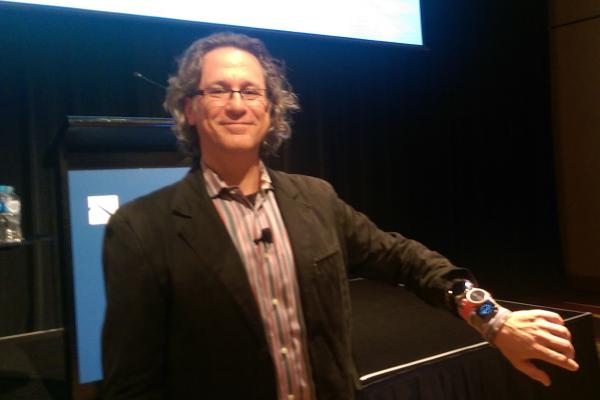Published on the 21/06/2016 | Written by Beverley Head

Gartner has identified five personal technologies it believes will deliver a fresh wave of disruption to the enterprise and IT operations over the next 5-10 years…
Speaking at the Gartner business transformation and process management summit in Sydney this month, research vice president Brian Blau identified the following technologies as having most impact:immersive virtual and augmented reality; personal internet of things (IoT) sensors; wearable devices; virtual personal assistants and bots; and advanced cameras and vision technologies.
While Blau made compelling arguments as to why these technologies will have an impact for business, he also warned that there will be IT challenges regarding the amount and types of data that will be collected and the purposes to which it could be put.
Cisco also this month released its Virtual Networking Index which suggests that by 2020 video will account for 82 percent of all internet traffic, while there will be 237 million networked devices or connections in Australia and 36.5 million in New Zealand.
Wearables would have a relatively early impact in the enterprise Blau said – citing Gartner forecasts that 227 million wearable units will be deployed by 2020 with smart watches and wristbands dominating. But Blau, who sports multiple wrist worn wearables, noted the need for greater standardisation.
“Blau, who sports multiple wrist worn wearables, noted the need for greater standardisation.”
He said that the wearables he used all measured things differently and there was no uniform frame of measurement, which would need to be addressed before they were appropriate for enterprise deployment.
Over time however he predicted they would find an enterprise niche and warned also that more integrated consumer technologies could sound the death knell for today’s app economy. Stand alone apps which perform single functions were likely to be replaced by what he described as the post-app “conversational commerce” era where offers to, or engagements with, consumers hinged around message platforms.
“He predicted they [wearables] would find an enterprise niche and warned also that more integrated consumer technologies could sound the death knell for today’s app economy.”
So when a consumer used Facebook Messenger to suggest a holiday to friends, an airline might start to offer deals, and then allow the flight booking engine to be accessed, all from within the messaging platform.
While that poses a challenge for industries still obsessed with app development to engage customers, enterprise IT teams will face their own problems.
Gartner has predicted that by 2021, a million new IoT things will be purchased every hour of every day. “If that’s not the quintessential definition of disruption I don’t know what is,” said Blau.
“The challenge there is around the data and how to integrate it,” he warned.
At the same time there is an unprecedented support issue in the wings.
“There is an unprecedented support issue in the wings.”
Blau said that by 2018 there will be six billion connected things all needing some form of support (Cisco puts the number of IoT devices in Australia at almost 140 million, and New Zealand at 25.7 million by 2020). “What happens when they break, or update or need a change?” Blau asked. It certainly puts today’s software patch management into perspective.
Gartner’s advice to enterprises is that they set up a process to evaluate the impact of personal technologies and identify the opportunities to improve workplace process and actions.
After that Blau said companies should start to design and pilot new systems with a view to begin full deployment within 12 months. But he warned there would be no opportunity for a set and forget approach stressing the need for organisations to leverage personal technologies through; “Experiment, design, deliver, improve and change behaviours – over and over again.”



























